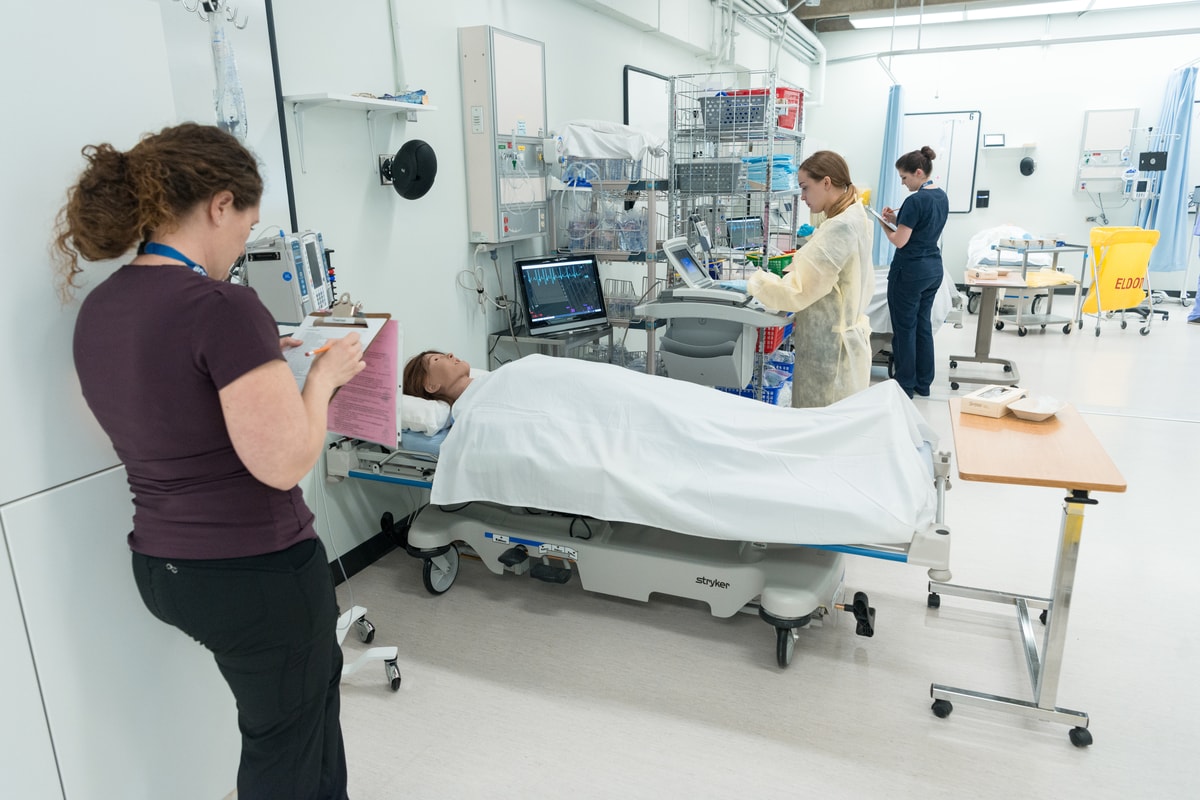From virtual reality to bleeding robots
If students attending polytechnic institutes have one overarching goal, it’s receiving job-ready education so they can start their careers as soon as possible after graduation. That’s certainly a big reason why 48,000-plus full- and part-time students attend the British Columbia Institute of Technology (BCIT), says James Rout, associate vice-president, education support and innovation at BCIT.
“As a polytechnic, our job is to get jobs for our students,” he says. “But it’s more than that – we also want them to have access to the latest technology for enhanced learning so they have skills and knowledge that will help them flourish and drive their respective fields – five and even 10 years down the road.”
Central to this philosophy is BCIT’s focus on integrating leading- edge simulation technologies like virtual reality into its curriculum.
“There are a number of post-secondary institutions doing work in these areas, but where we’re innovative and unique is developing a comprehensive cross-institution strategy with three major strategic directions.”
First, BCIT is creating programming that will make students experts at developing virtual reality (VR) and augmented reality (AR) technologies.
The second piece is integrating these technologies in the classroom to improve learning experiences. Third, the post-secondary wants to build awareness of the technological implications of VR and AR technologies by providing access and training to BCIT staff and faculty.
The full potential of these technologies is yet to be realized, but BCIT is already ahead of the curve, providing some of the most impressive hands-on educational experiences anywhere in Canada.
“We want our students to be on the front line of leading innovation, pushing the boundaries of not just existing industries, but the ones of the future, too,” Rout says. “And we believe really strongly that embracing new innovations – like VR and AR – position BCIT well to do just that.”
BCIT’s School of Health uses robots to simulate working with real patients
They bleed. They cry. Heck, some even give birth. The medical ‘sims’ – lifelike robots now in use at the BCIT School of Health Sciences in its critical care nursing program – do just about everything a real hospital patient might. Learning the ropes on interactive robots provides a unique educational opportunity for students, giving them as real-world an experience in emergency health care as they can get without being thrown into a genuine hospital, says BCIT instructor Rob Kruger. Kruger leads the program’s simulation and innovation work.
“We have one of the largest simulation centre in Canada, with over 40 robots spanning from little neonates that weigh less than two pounds at 27 weeks gestation, all the way up to what looks like an older, retired, female patient,” says Kruger.
“These robots do just about everything that can happen in terms of patient reactions inside an acute care setting.”
While cutting-edge by some educational standards, medical sims have been an intrinsic part of the critical care nursing curriculum for many years, providing students with the unparalleled opportunity to get hands-on know-how in highstress situations that can occur in a critical care setting – all in a safe, controlled and simulated environment.
“It’s almost like our students are developing muscle memory, only in this respect the brain is the muscle,” Kruger says. “That way, when our grads go to work in a clinical practice setting, they are a lot more confident and capable of jumping into the fray right away.” Capable of simulating childbirth (yes, a pregnant robot gives birth to a baby robot – really), trauma and heart attacks, the sims are so lifelike, students feel much like they would working with flesh and blood patients. And the aim is to expand the program soon to other health care disciplines at the school, including prosthetics and orthotics, and medical imaging technologies.
“We want them to get used to working in a team environment, which ultimately improves performance,” he adds. “That way when they do face high-stress situations, they can draw on their experiences with the simulations and carry out their duties to the best of their ability.”
This story first appeared in The Vancouver Sun, June 10, 2017 with credit to Joel Schlesinger – Postmedia Content Works.
